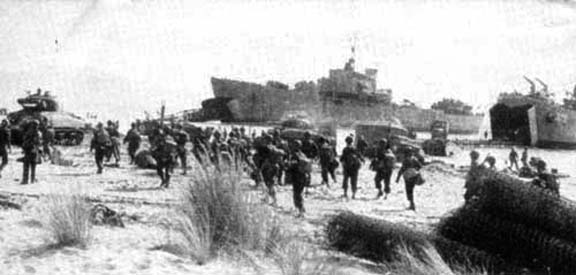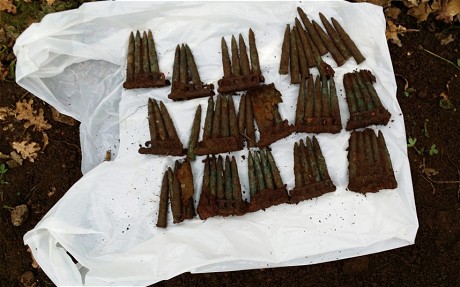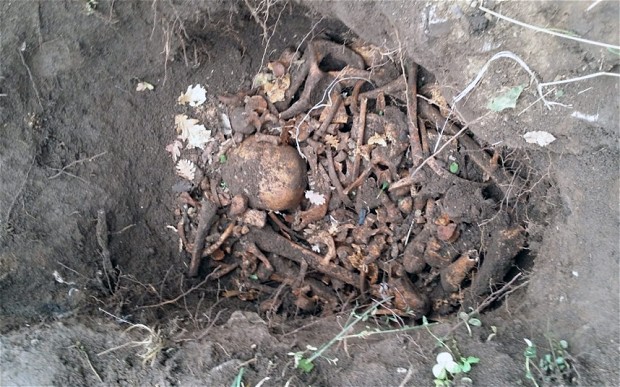
Amateur military historians have recently unearthed the skeletal remains of two British soldiers who were said to have been killed by the German forces following the D-Day landing at Salerno in Italy.
The remains of the soldiers were discovered by members of a historical group who used metal detectors in their search. The soldiers are believed to be with either the Coldstream Guards or the Grenadier Guards.
Along with the skeletal remains were military effects including British-made ammunition, belt buckles and buttons leading the amateur historians to conclude that they may belong to British soldiers.
The bodies and the items were discovered buried underneath the ground in an area marked by British forces as Hill 270. The place was a key military strategic position near the village of Capezzano.
The soldiers were said to have been killed in action by German forces who successfully took over the hill which the British held ground during a brutal battle. The soldiers could have also been hurriedly buried since the grave was only shallow or a few feet from the surface. The Wehrmacht troops who consolidated the area might have been the ones who buried the men.
“The ammunition we found near the bodies is without doubt British and we know that the Grenadier Guards and Coldstream Guards were fighting in this area,” Matteo Pierro, from the historical research group “Salerno 1943”, said.
“Very few British soldiers went missing in action in this battle, so we think it should be relatively easy to identify who these two were. It’s now up to the British authorities to identify them.”
The Allied invasion of mainland Italy included the landings at Salerno which is south of Naples. The invasion occurred in September 1943 after the successful landings of Sicily in July of the same year.
The Allied landings at Salerno was also codenamed as Operation Avalanche. The main invasion force focused at Salerno while the smaller groups also undertook operations in Calabria and Puglia at the farther south of Italy.
The remains have been turned over to the British embassy in Rome. The embassy has also contacted the Service Personnel and Veterans Agency at the Ministry of Defence in London to identify and take custody of the remains of the soldiers.
(Photographs: The Telegraph)
“I hope we can identify who these soldiers were. Once we’ve done so, we will give them a final resting place next to their comrades in the nearest war cemetery,” said Colonel Duncan Venn who is the British military attache in Rome.
The battle for Hill 270 was described by Christopher Bulteel, an officer for the Coldstream Guards, as bloody in his wartime memoirs. The officer is a recipient of the Military Cross for leading a frontal assault against a heavily-guarded and heavily-defended enemy position.
“Capt. Bulteel led his platoon, which he was commanding, in a frontal assault upon the precipitous side of the hill, the whole of which was covered from the top by many enemy machine gun posts,” the citation of his military award read.
“Through intense enemy M.G. [machine gun] and mortar fire and the many grenades which the defenders threw down from their positions Capt Bulteel pressed on at the head of his platoon.
“By his determination, his utter disregard for his own safety and by his magnificent leadership his platoon, now sorely depleted through heavy casualties, succeeded in scaling the hillside and infiltrating between the enemy posts to assault and silence them from the flanks and rear.
“The natural strength of the enemy positions, the number of their machine guns and the intensity of their defensive fie, M.G. mortar and grenade, must have presented the feature as impregnable. But the attack succeeded and the hill was taken and held.”

